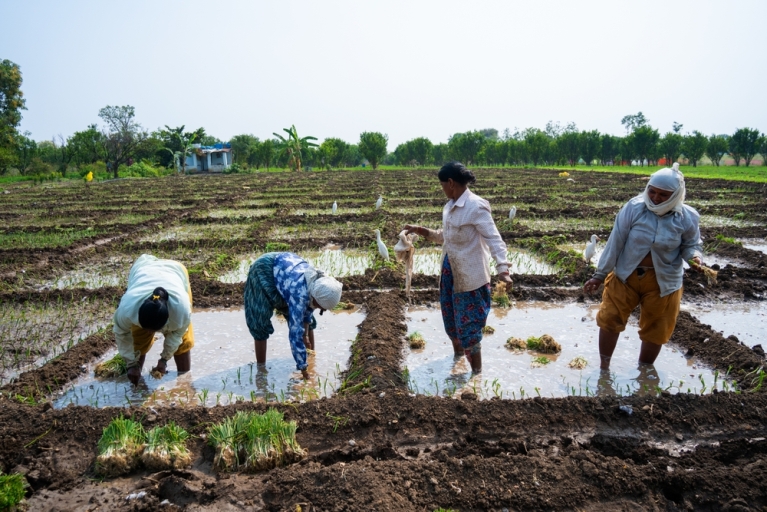
All forms of gender-based violence and harassment are prohibited.
These are a range of behaviours directed at a person based on their sex or gender, including violence or threats of violence, and any physical, verbal or non-verbal conduct, which makes them feel uncomfortable, intimidated, offended or humiliated in their work environment or activities linked to work.1
We all have the right to work in safe environments, free from violence and harassment.2 Gender-based violence and harassment (GBVH) can affect people of any gender, and when it occurs, it often harms the physical and mental wellbeing of victims and survivors. To ensure workplaces are safe, employers have a responsibility to take action to prevent and respond to GBVH. Workers should feel safe to speak up without fear for their personal safety, job loss or other negative consequences. As well, safer workplaces support workers’ wellbeing and productivity.
1.1 Clearly communicate zero tolerance3 for GBVH in the workplace4.
- Refer to international standards and national laws, and local social norms, making clear that no one working for or linked to the business should experience or commit GBVH in the course of their work against workers or other rightsholders, including community members.
- Clearly communicate that this applies to all individuals including but not limited to job seekers and applicants, contract, sub-contracted, casual, seasonal and permanent workers, migrant workers, supervisors, management, senior management, owners and those acting as employers.
- Clearly communicate that GBVH committed by third parties, such as external contractors on site (e.g. security personnel), and recruitment agents and labour providers, is not tolerated.
- Establish clear codes of conduct and expectations for professional behaviour in the workplace along with additional risk mitigation measures in situations that may create risks, such as personal relationships between managers/supervisors and workers.5 Measures may include mandatory confidential disclosure requirements, tailored to the social and cultural context.
- Discuss specific policies with worker representatives/trade unions, NGOs, gender experts with localised knowledge, and where appropriate, community members.6
Definition: Worker(s)
“Workers” refers to all individuals engaged in or connected to work, regardless of their contractual status. This includes employees at every level, from field to boardroom, as well as interns, apprentices, trainees, volunteers, jobseekers, job applicants, and those whose employment has ended. - ILO Convention 190
Definition: World of work
The “world of work” includes all places and situations connected to work. This covers regular workplaces (such as factories, offices, processing sites, fields and vessels); toilets, break and rest areas; work-related trips, travel to and from work, training, social events; work-related communications (such as email, text messages, instant messaging); and employer-provided accommodation. - ILO C190
1.2 Engage with workers and affected stakeholders about what GBVH means to them.
- Refer to national law and international standards7 and engage with workers and their representatives/trade unions to understand how GBVH is perceived, including examples of behaviours (not individuals) and workplace risks. Discussions should not ask workers to disclose if they have experienced GBVH. Disclosures of GBVH should be made through grievance mechanisms (see Principle 8).
- Engage GBVH experts, such as specialist NGOs, to provide safe and respectful ways of engaging with workers, especially where migrant workers may face language barriers or cultural differences.
- Understand how GBVH impacts workers and reflect this in workplace policies, procedures and training. In contexts where community members are affected rightsholders, involve families, groups, and/or community leaders in discussions.
Examples of GBVH may include: comments, inappropriate jokes/banter, shouting, staring, rubbing, touching, pressing, actions that result in hostile work environments, sexting, watching pornography openly, sexual favours in exchange for jobs/more favourable work assignments/overtime/other benefits at work, unwelcome sexual advances, making suggestive gestures (e.g. miming sexual acts), abusing positions of power, humiliating others, sexual violence and assault, and more.
1.3 Co-create a culture of prevention and respect with workers.
- Collaborate with workers, worker representatives/trade unions to define workplace values, behaviours and a culture that is respectful, ensures fair and equitable treatment, provides a safe environment, and encourages people to speak up if they experience or witness GBVH or inappropriate conduct.
- Embed this shared understanding into ongoing awareness and training activities (see Principle 7)
